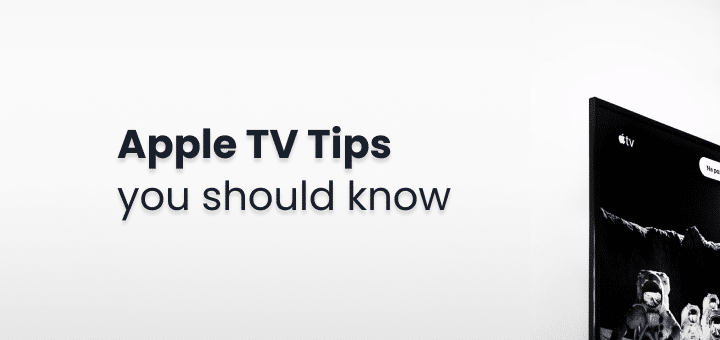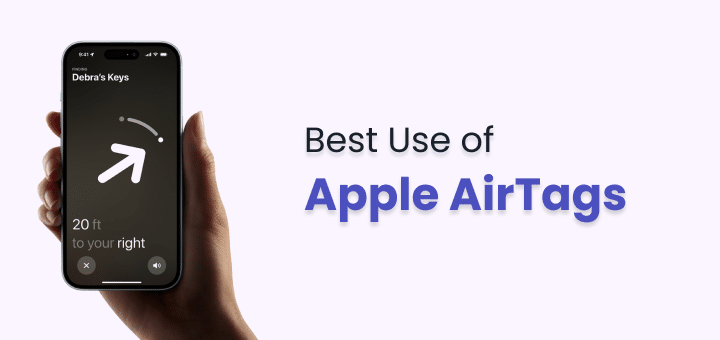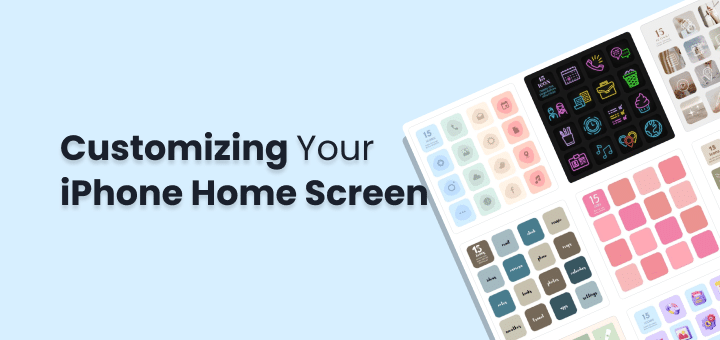The great thing about the iPhone models is that it changed how phones work. The iPhone introduced new technologies that had never been seen before regarding how they worked. It also introduced a new type of user interface that made mobile internet browsing more enjoyable, among other things. The multitouch interface, soft keyboard, and visual voicemail on the first iPhone were some of the best things about it. Plus, everyone else had one!
There are two main reasons for the iPhone’s huge popularity: how well it fits into users’ lives and how often it gets new versions. With so many things they can do on one device, iPhones have become like extensions of people who own them. Besides that, the iPhone models always made sure to keep up with the times by adding new features and updating to keep up with technological changes. This way, each new model is better than the last.
In this article
Overview of Current iPhone Models – 2024

| Model | Screen Size | Processor | Camera | Storage Options | Price Range (Starting) |
|---|---|---|---|---|---|
| iPhone 15 Pro Max | (6.7″) Super Retina XDR display | A17 Pro chip | Pro camera system 48MP Main | Ultra Wide | Telephoto Super-high-resolution photos (24MP and 48MP) Next-generation portraits with Focus and Depth Control | 128GB, 256GB, 512GB, 1TB | USD 1199 |
| iPhone 15 Pro | (6.1″) Super Retina XDR display | A17 Pro chip | Pro camera system 48MP Main | Ultra Wide | Telephoto Super-high-resolution photos (24MP and 48MP) Next-generation portraits with Focus and Depth Control | 128GB, 256GB, 512GB, 1TB | USD 999 |
| iPhone 15 | (6.1″) Super Retina XDR display | A16 Bionic chip | Advanced dual-camera system 48MP Main | Ultra Wide Super-high-resolution photos (24MP and 48MP) Next-generation portraits with Focus and Depth Control | 128GB, 256GB, 512GB | USD 799 |
| iPhone 15 plus | (6.7″) Super Retina XDR display | A16 Bionic chip | Advanced dual-camera system 48MP Main | Ultra Wide Super-high-resolution photos (24MP and 48MP) Next-generation portraits with Focus and Depth Control | 128GB, 256GB, 512GB | USD 899 |
Recommendations for Different User Types
iPhone 15 Pro – Best new iPhone

Titanium is used instead of stainless steel to make the iPhone 15 Pro. This is a first for the iPhone models line. As expected, the iPhone 15 Pro is 9% lighter than the iPhone 14 Pro, weighing 6.60 ounces compared to 7.27 ounces. This is because titanium is stronger and lighter than stainless steel. You can pick from Black Titanium, White Titanium, Blue Titanium, and Natural Titanium. If you want to protect that titanium, you’ll still need an iPhone case.
In addition to making the phone lighter, Apple has also made it a little smaller by cutting down on the size of the bezels around the screen.
The Action Button also comes with the Pro iPhones and takes the place of the mute switch on the side. You feel something when you “press” it, and the Dynamic Island comes to life. Because it can be changed, it can be set to quickly do complicated tasks like opening any app, starting the camera, recording your voice, and so on.
The A17 Pro processor is inside the iPhone 15 Pro. On a consumer level, this is the first 3nm chip to show up. Apple says the two high-performance CPU cores are “10% faster,” the four high-efficiency cores are “faster,” the 6-core GPU (the 14 Pro had 5-cores), the Neural Engine, and the 6-core GPU offer “20% faster peak performance and better energy efficiency.”
The battery life is about the same as the iPhone 14 Pro, with up to 23 hours of video playback. When plugged into a 20W adapter, it can be charged quickly and still be 50% charged in 30 minutes. When we talk about charging, you can recharge your Apple Watch or 2nd-gen AirPods Pro by plugging them into your phone. This is called reverse charging.
The iPhone 15 series has USB-C ports instead of Lightning ports, which is another big change for 2023. All of these changes are good, but the Pro iPhone models get a faster USB 3 connection with up to 10 Gbps of bandwidth, which is one of the biggest. The new ports can also connect to DisplayPort devices, which means they can all send video at up to 4K/60Hz to an external screen.
There is also Wi-Fi 6E on the iPhone 15 Pro. The regular iPhone 15 only has Wi-Fi 6, the same as the iPhone 14 range. Also, only the 15 Pro iPhone models have the low-power home networking mesh networking technology Thread. Also, all iPhone models made in 2023 will have the second-generation U2 Ultra Wideband chip, which works better farther away.
When it comes to the camera, there is a bigger difference between the generations. The newer iPhone’s 48MP main camera is bigger than the older one’s, and it’s even bigger than the new 48MP camera on the iPhone 15. The Pro model takes a new 24MP HEIF picture by default, just like the iPhone 15. This 24MP mode can make three different zoom levels, which are the same as 24mm, 28mm, and 35mm lenses, by using different parts of the image sensor. The telephoto camera on the iPhone 15 Pro is a better 12MP camera that still has a 3x zoom (the same as a 77mm lens).
iPhone 15 Pro Max – Best for photography features
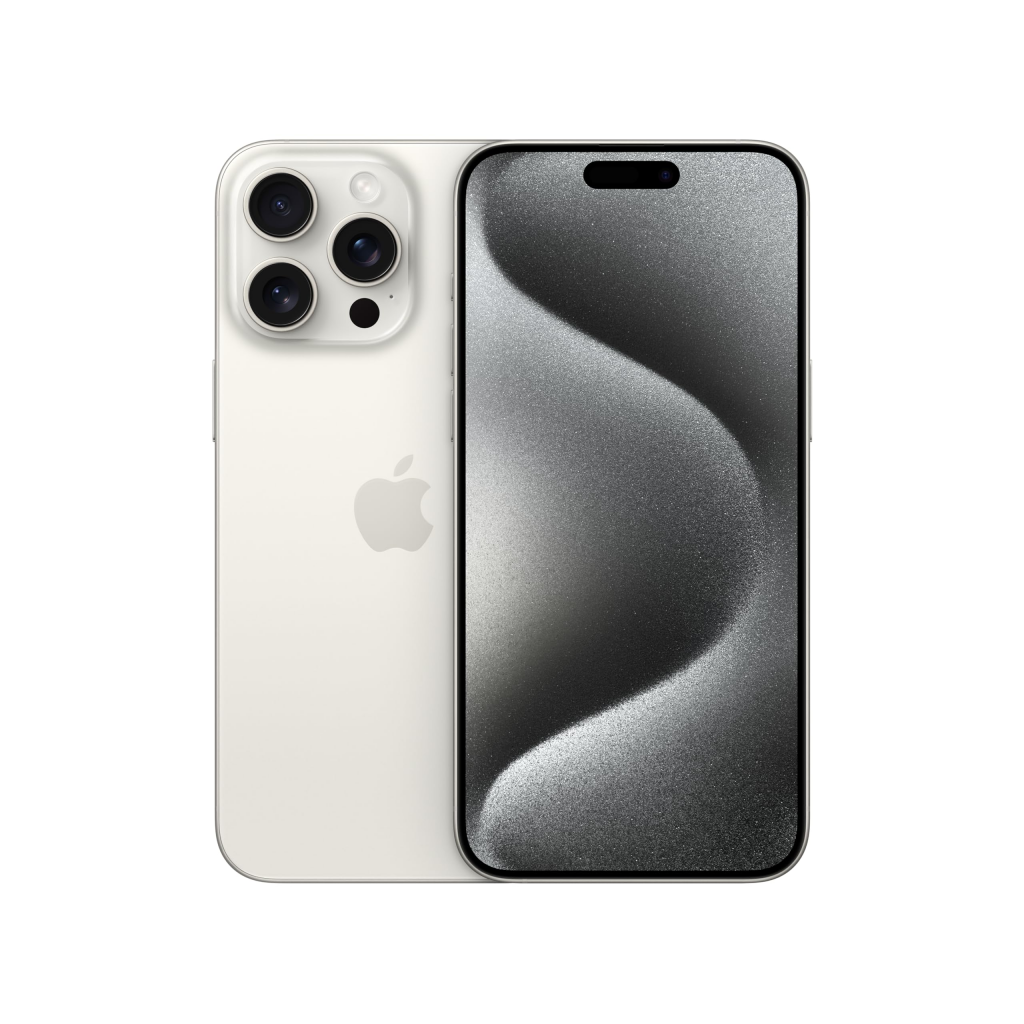
Most of the time, Apple’s Pro Max iPhone models are just bigger versions of the standard Pro model. But sometimes they come with extra features. For 2023, the Pro Max model is much more than just a big iPhone 15 Pro thanks to new camera tech that includes a 5X zoom on the telephoto camera.
The outside of the iPhone 15 Pro Max is made of titanium and covered in glass. It comes in the same four colours as the Pro model: Black Titanium, White Titanium, Blue Titanium, and Natural Titanium. The 15 Pro Max is smaller than the standard Pro model because the bezels have been cut down. It is also lighter than the previous model, weighing 7.81oz instead of 8.47oz.
There is also the same A17 Pro processor in both Pro iPhone models. This is Apple’s first 3nm chip. As you can see from the iPhone 15 Pro specs above, Apple makes some big claims about it. The GPU in both of the pro-iPhone models coming out in 2023 has six cores instead of five like the ones coming out in 2022. They also use a new shader architecture. It has hardware ray tracing acceleration, which Apple says is the fastest in any smartphone and up to four times faster than software ray tracing. It also has new graphics features like mesh shading. For the first time, Apple has added a hardware AV1 decoder.
A new “tetra prism” periscope lens is added to the iPhone 15 Pro Max. This lens bounces light four times inside the phone, giving it a longer focal length of 120mm, or a 5x zoom. The 3x/77mm telephoto camera on the iPhone 15 Pro isn’t as good as this one. The digital zoom goes from 15X to 25X as well.
Both of the new pro-iPhone models have a new ultra-wide camera with a lens coating that reduces glare and better quality in night mode.
The Action Button, which takes the place of the mute switch, is on both of 2023’s Pro models. Because the button can be changed, it can be used to do complicated things like open any app, start the camera, or record your voice.
Apple iPhone 15 – Cheapest new iPhone
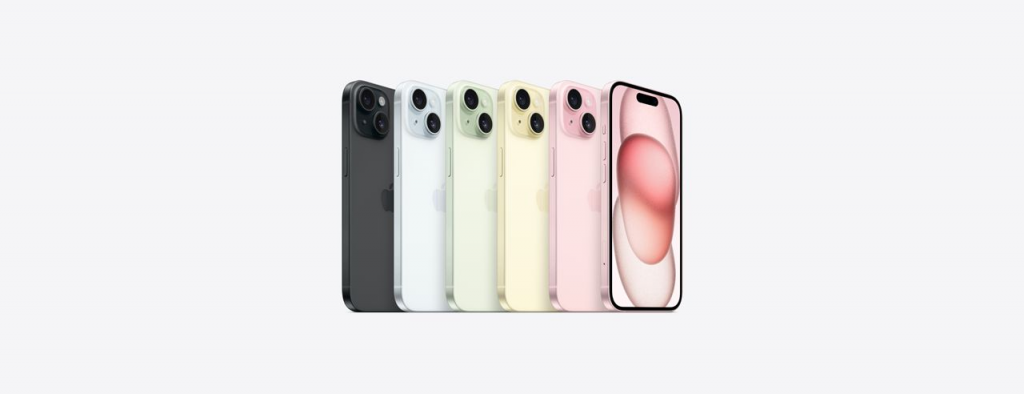
When compared to the iPhone 14, the standard iPhone 15 doesn’t have as many bells and whistles as the Pro models, but it does have some great new ones.
First up is the Dynamic Island, which is the most innovative feature of the iPhone 14 Pro and Max. It turns the notch into something more useful. There are some features that the iPhone 15 doesn’t have that the iPhone 14 Pro does. For example, it doesn’t have ProMotion or an Always-On display.
The camera on the iPhone 15 is also better than the camera on the iPhone 14. The back camera now has two lenses: a 48MP f/1.6 main camera and a 12MP f/2.4 ultra-wide camera. It also has up to 2X optical zoom. That’s in contrast to the iPhone 14’s 12MP Main camera with an aperture of ƒ/1.5. It gets Smart HDR 5 like all the other iPhone models released in 2023.
The brighter colours of 2022 were blue, purple, yellow, midnight, starlight, and Product Red. This year’s colours are black, blue, green, yellow, and pink.
The iPhone 15 and iPhone 15 Pro models are smaller because they have smaller bezels, but the iPhone 15 is a bit taller than the iPhone 14—at 5.81 inches (147.6 cm) vs. 5.78 inches (146.7 mm). It also weighs a little more than the one that came before it.
All iPhones released in 2023 have a USB-C port where the Lightning port used to be. The USB-C port on the Pro models seems to have some extra features, though. For example, the iPhone 15’s USB-C port only supports USB 2, but the iPhone 15 Pro’s port supports USB 3 up to 10GB/s.
The A16 Bionic chip from the iPhone 14 Pro is in the iPhone 15. It has a 6-core CPU and a 5-core GPU, which should be a nice step up from the iPhone 14.
Plus, the iPhone 15 costs $100 less than the iPhone 14 did when it came out in 2023. When it first came out, the iPhone 14 cost $829/£849, and the iPhone 15 costs $799/£799.
Apple iPhone 15 Plus – Get a big iPhone for less

The iPhone 15 Plus is the iPhone 15, but it’s bigger. It has the same features, like the new USB-C port and the A16 Bionic chip with a 6-core CPU and a 5-core GPU. It has a 6.7-inch screen, the same as the iPhone 15 Pro Max, but it’s a little bigger than the pro model. Despite this, it weighs 7.09 ounces instead of 7.81 ounces, making it lighter than both the Pro Max and the 2022 Plus model.
The Pro Max is the better phone because it has a “tetra prism” periscope lens, 5x zoom, and other great features. But the iPhone 15 Plus has a better camera than the 14 Plus because it has a new 48MP main camera with a ƒ/1.6 aperture instead of the 12MP main camera with a ƒ/1.5 aperture. It has Smart HDR 5 as well.
Dynamic Island is also on the iPhone 15 Plus. It turns the notch into something a little more useful. But you won’t find the other features of the iPhone 14 Pro. For example, the screen won’t always be on or have ProMotion. In 2023, the price is better. The iPhone 14 Plus costs $929 or £949, but the iPhone 15 Plus will cost $899 or £899.
Apple iPhone 13 – A good value option
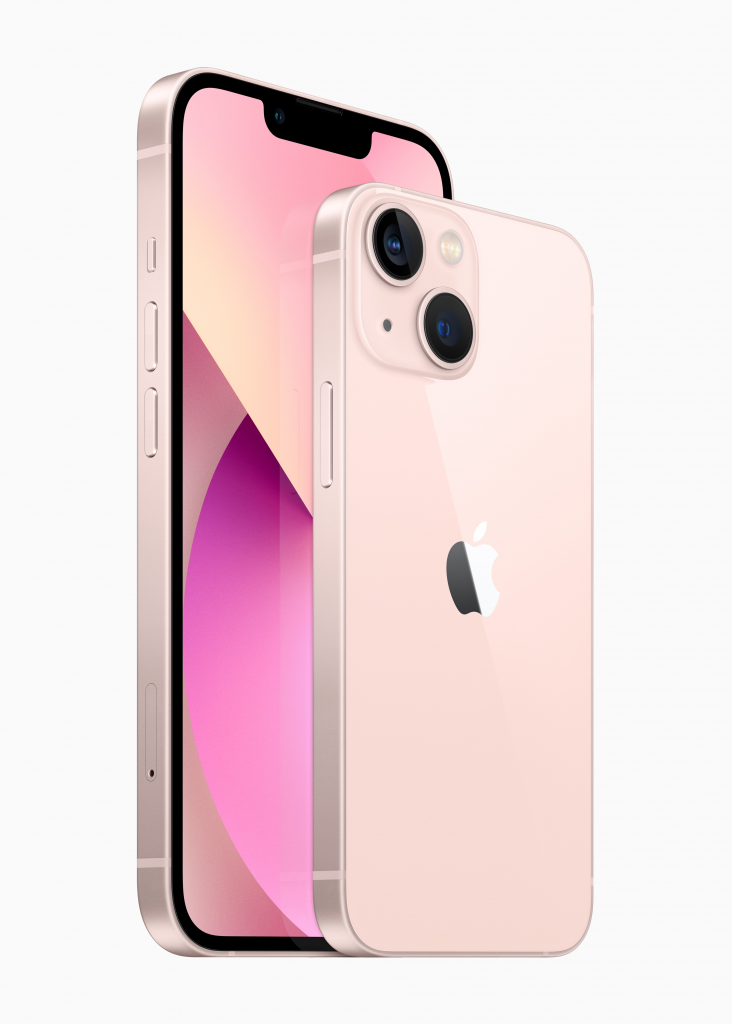
The iPhone 13 is $100 or £100 less expensive than the iPhone 14 and $200 or £200 less expensive than the iPhone 15. This iPhone model from two years ago is still a good choice if you want to buy a new one. A lot of people will think it’s worth the extra money to get a newer iPhone with more features. Still, the iPhone 13 is better than the iPhone 14 in some ways.
We think the main reason is that the extra money spent on the iPhone 14 could be used to make the iPhone 13’s storage bigger. A 128GB iPhone 14 costs $699/£699, but a 256GB iPhone 13 costs the same but costs $699/£699. I can see why you might want to get the most storage space you can afford, especially if the phone you are replacing has more space.
In many ways, the iPhone 14 and 13 are the same. There isn’t much difference between the 13 and 14 at first glance, so no one will know you have last year’s phone. You might even like the deeper colours of the 2021 iPhone over the muted colours of the 2022 iPhone models. The iPhone 14 and 13 both have a small notch at the top of the screen, but the iPhone 15 has the Dynamic Island, which makes it more obvious that it’s a new phone.
When you choose the iPhone 13 over the iPhone 14, you won’t be giving up as much as you would have in previous years if you wanted to upgrade from older iPhone models but didn’t have the money for the iPhone 15. This means you can save your money.
Apple iPhone SE (2022) – The smallest iPhone with a Home button
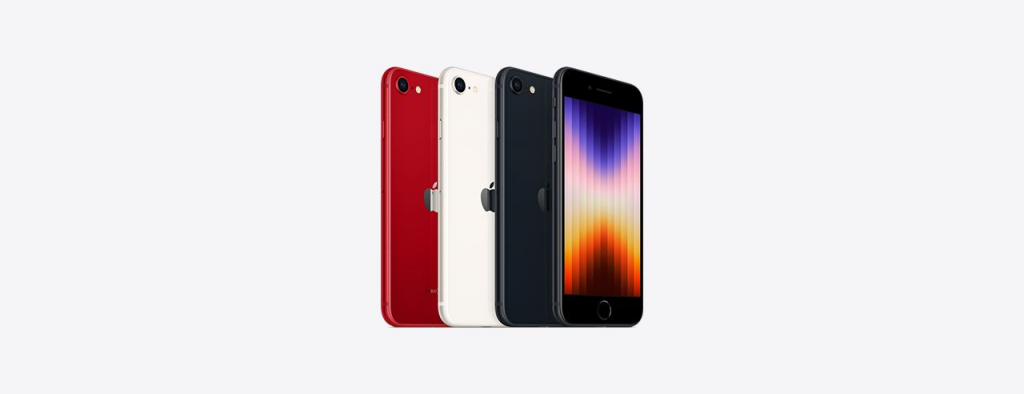
Apple no longer makes the iPhone 13 mini, so the iPhone SE is now the only small iPhone model they sell. We think an iPhone with a 6.1-inch screen (like the iPhone 13, 14, or 15) would be better because the screen is bigger, but the iPhone isn’t much bigger. It’s about the same size as the iPhone 8, so if that’s the right iPhone size for you, this is it.
But there’s one more important reason the iPhone SE might be a good choice for some people. Anyone who thinks they need the Home button will likely get lost with any iPhone except the iPhone SE. Of course, most of us can get used to Face ID and swiping instead of pressing a button, but some people still like having a physical button, which is why Apple still sells an iPhone with one (though we don’t know how much longer that will last). Any iPhone model can get a software Home button, though. Find out how to add a Home button to software.
The iPhone SE is also the cheapest new iPhone from Apple in 2022, which is another reason to pick it. It costs $429/£429 now. That’s more than the older iPhone models, though—the iPhone SE used to cost $399. Just make sure you don’t get an older iPhone SE model—this is the third-generation iPhone SE; the first one came out in 2016 and the second in 2020! We don’t think you should buy the iPhone SE, but if you need the Home button, and we know some older people who are worried about not having it, it’s your only choice.
iPhone 14 Plus – Big phone, lower price

People who might have bought the iPhone 14 Pro Max because they wanted a big iPhone now had a choice. They could save a good amount of money and buy new iPhone models with standard features. Or, to put it another way, they could save money and get more storage by choosing a 512GB iPhone 14 Plus over a 256GB iPhone 14 Pro Max. For some, more storage is more important than more features.
Now, Apple has lowered the price of the iPhone 14 Plus from $929/£949 to $799/£799, putting it below the iPhone 15 Plus, which now costs $899/£899. If you choose the older model, you can save some money, or you could get the 128GB iPhone 14 Plus for the same price as the 15 Plus. If you don’t need that extra storage (which you might not if you pay for iCloud), the iPhone 15 Plus is a better choice in a lot of ways. It has a better processor, a better camera, and the Dynamic Island. The iPhone 14 Plus is a good choice if you want to save money and get a big iPhone.
iPhone 14 – Good enough

The last S iPhone model that Apple made was a few years ago, but the iPhone 14 could have been called the iPhone 13s instead. The iPhone 14 (and) doesn’t have the A16 Bionic processor like the iPhone 14 Pro (and Max). Instead, it has the A15 Bionic processor from the iPhone 13 Pro. This means that it has an extra graphics core than the iPhone 13, which is still for sale.
What makes the iPhone 14 hard is that the iPhone 13 is still available and is a lot like the iPhone 14. There are two very similar iPhone models that you can buy instead of the more expensive ones. One of them will save you $100/£100.
The main cameras are by far the most important difference between the iPhone 14 and the iPhone 13. The newer model has a faster aperture (ƒ/1.5 instead of ƒ/1.6) and a larger sensor on the main camera, which makes it work better overall and take better pictures in low light. The iPhone 14 also has a new computer system called Photonic Engine that helps features like Foreground Blur work better and capture more detail in low light. You don’t have to hold the iPhone models still for as long, which is a big plus. This isn’t just for better photos in low light.
One more thing that makes the iPhone 14 better than the iPhone 13 is the Action Mode. When you’re in action mode, you can record videos while walking or even running. It’s a fun feature that most likely will be used by people. The iPhone 14 also has a better front-facing selfie camera with an aperture that is bigger and autofocus that works better.
The iPhone 13 doesn’t have some features that the iPhone 14 does, like the Crash Detection feature. If this happens to you, you’ll probably be glad you have the 14. If you want to know how the iPhone 14 stacks up against the iPhone 15, which is also only $100/£100 more, the newer iPhone has a better 48MP camera, a USB-C port, Dynamic Island, and the A16 Bionic chip. If you want to save money, there’s no reason to get the iPhone 14 instead of the iPhone 15. You could save even more money by getting the iPhone 13.
You now know everything you need about every iPhone model Apple sells as of the end of 2023. There are a few iPhones Apple no longer sells that you might want to look into if you see them on sale.
Ranking the iPhone Models
It used to be easier to choose iPhone models—just get the newest one with as much storage space as you can afford. But picking an iPhone model isn’t as easy as it used to be. We still say to get as much storage as you can afford. Apple sells eight different iPhone models right now. Four of them came out in the fall of 2023, two in the fall of 2022, one in the spring of 2022, and one in 2021. Plus, the Apple Refurbished Store and other places still sell older refurbished iPhone models. Apple gives customers so many options because, well, everyone has different needs. Take a look at them:

Apple iPhone
The OG iPhone shows how the phone came to be, which is still very impressive. It was Apple’s first mobile device. It had a 3.5-inch screen, was 11.6 mm thick, had 128 MB of memory, and 16 GB of storage. Surprisingly, that much storage space was huge at the time, though it may not seem like much now that you look at how much space iPhone models have.
In terms of features, the phone didn’t have 3G. Instead, it had quad-band GSM with GPRS and EDGE, a 2MP camera, and a touchscreen instead of a keyboard. Right now, $599 seems like a very small amount of money to pay for something. The phone was supposed to be the first in a long line of similar devices. At the time, it was seen as a new take on the traditional cell phone, and the market for these devices would only keep growing.
Release date: June 29, 2007
Price: USD 599
The iPhone 3G

After the iPhone 4, the iPhone 3G came out next. A lot of the outside design didn’t change, but the iPhone model’s biggest improvement was that it could connect to 3G mobile data. The iPhone 3G had a lot of the same software as the iPhone models. It’s safe to say that this was the iPhone that made cell phones popular and necessary.
The iPhone 3G had a 3.5-inch screen, a 2MP camera, and 128MB of memory. It was 12.3 mm thick. After all the hype, it seemed like everyone loved it just as much as they thought they would. In its first weekend on sale, a million units sold for $699, setting the standard for future iPhone models. The next model would be the 3GS, where “S” stands for “speed,” and it would have better performance, a three-megapixel camera with better resolution and video recording, and voice control.
Release date: July 11, 2008
Price: USD 699
The iPhone 4

After the iPhone 3GS came out, two years later, the iPhone 4 came out. It was a huge hit all over the world because it was so fast—faster than any old cell phone had ever been. Apple made the speed faster by increasing both the CPU and the memory on the phone. Aside from this, its design was mostly the same as the two that came before it, with a few small differences.
It was the first iPhone model to use an Apple processor, the Apple A4, and updated features like a better camera (from 2MP to 3MP) and 480P video were included. This did a great job of getting people interested in the new iPhone models. It was one of the best-selling phones of its time, selling millions of units for the same price as the iPhone 3G.
Release date: June 24, 2010
Price: USD 699
The iPhone 5

In 2011, the iPhone 4s came out, and then the iPhone 5. We bet that at least one of your friends still has this phone today. There were some pretty big changes and updates compared to the iPhone 4s when it first came out, even though it looked the same. It was less thick and lighter, and it was also the first iPhone model to work with 4G LTE.
Plus, the new A6 processor it ran on made it faster, which was another plus. It had 4 inches of screen, 1 GB memory, lightning connectors, slow-motion video recording, dual flash, touch ID, and an 8 MP camera. Interestingly, 2 million pre-orders were placed in the first 24 hours after it came out, and it sold 5 million units in its first week. The 5C and 5S, two newer versions of this model, came out in September 2013, about a year later.
Release date: September 21, 2012
Price: USD 849
The iPhone 6 and 6 Plus

The iPhone 6 and 6 Plus were one of the most noticeable changes to the way an iPhone looks since the iPhone 4 got a new design update. With a 5.5-inch 1080p display, they were the biggest phones Apple had ever made to date. This meant that the 4-inch iPhone model option was no longer available. We remember how shocked we were at the time!
Other features included a Retina HD display, 128 GB of storage, 4.7-inch (iPhone 6) and 5.5-inch (iPhone 6 Plus) displays, a 12MP camera, and 2GB of memory. These phones were technologically better than their iPhone 5 counterparts in every way. Because of this, the iPhone 6 and iPhone 6 Plus are still some of Apple’s most popular phones ever.
Release date: September 19, 2014
Price: USD 849 for the iPhone 6, USD 949 for the iPhone 6 Plus
The iPhone SE

When it came out in 2016, the first iPhone SE, it quickly became the favourite iPhone of millions of Apple fans. It was a step down for Apple after the iPhone 6 and 6 Plus, which were the biggest iPhones to date. This much smaller, more compact iPhone model was the next step down. Plus, it was less expensive and had many of the same features as the more expensive ones.
Release Date: 31 March 2016
Price: USD 299 for the first generation, USD 719 for the third generation
The iPhone 7 and 7 Plus

When the iPhone 7 and 7 Plus came out, things changed in a big way. This iPhone model had some significant improvements despite using the same CPU, Apple’s A10 Fusion. As part of these updates, there was a new jet-black colour, a 16GB base option, 32GB and 256GB storage, and the first dual-lens camera with OIS and 2X optical zoom.
The headphone jack was taken out so that EarPods and a wireless converter could be used instead of earbuds. We won’t lie and say this didn’t bother some people (including us) at the time, but the iPhone models were still a huge success, selling millions of units.
Release date: September 16, 2016
Price: USD 849 for the iPhone 7, USD 969 for the iPhone 7 Plus
The iPhone 8 and 8 Plus
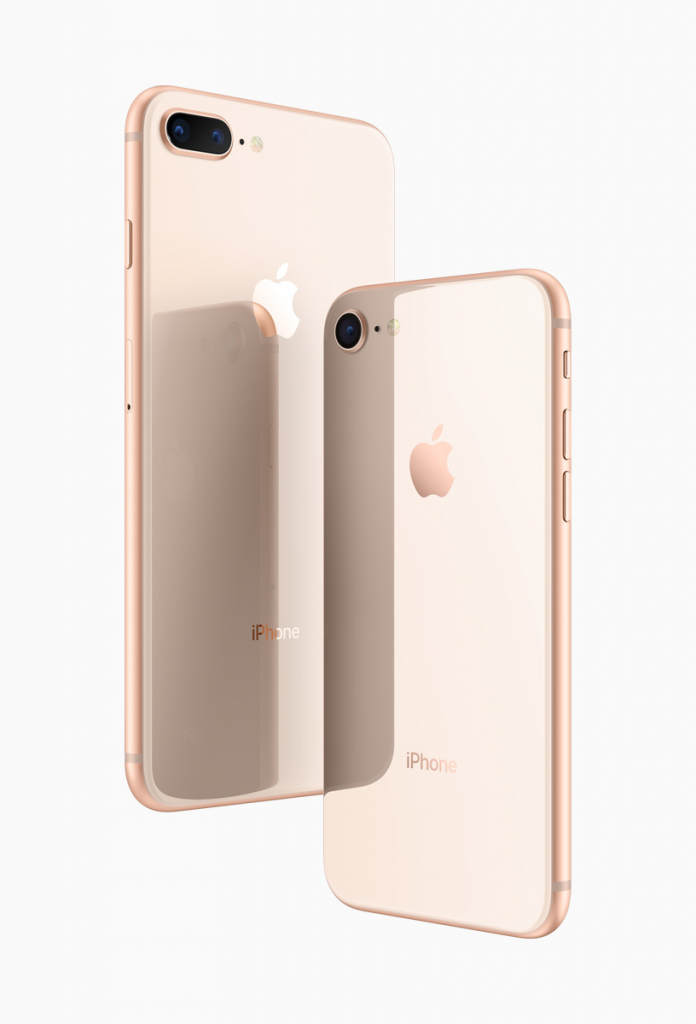
With the release of the iPhone 8 and iPhone 8 Plus, not much changed, except some minor aesthetic and user-experience improvements like the glass cover on the back of the phone, wireless charging, and photo editing and photo filtering. Along with this, the phone’s software had some small improvements, like a slightly faster CPU and a better true-tone display.
Release date: September 17, 2017
Price: USD 849 for the iPhone 8, USD 949 for the iPhone 8 Plus
The iPhone X

After 10 amazing years of the iPhone models, Apple released a letter, X, instead of a number. At the time, if this wasn’t enough to get people excited, the big changes certainly were. The iPhone X from Apple looked and had cool new features that made it stand out.
The iPhone X got rid of the home button and replaced it with Face ID. It also has portrait mode and an extra camera on the front. The iPhone XR, the iPhone XS and XS Max with Super Retina HD displays, and a few others were all like this. It costs a lot for this huge step forward in phone technology.
Release date: November 3, 2018
Price: USD 1,149
The iPhone 11

The iPhone 11 came in several iPhone models, such as the 11 Pro and 11 Pro Max. It was also less expensive than its predecessor, which was another reason why it was so popular. A Super Retina XDR display and triple-lens cameras were some new features. The cameras also worked better. The phones had Apple’s A13 chipset, which is a very powerful SoC. This made people love the iPhone 11 even more.
Release date: September 20, 2019
Prices start at USD 1199
The iPhone 12

The iPhone 12 is the next model in the line of iPhone models. New and cool things were added to the iPhone 12 and iPhone 12 mini. They had edge-to-edge Super Retina XDR displays and a new Ceramic Shield cover. The camera got another update: a dual-camera system with an Ultra-Wide camera and a new Wide camera that could shoot HDR video on Dolby Vision. At the time, this gave the phone the best video quality of any smartphone. It was also the first iPhone model that could connect to 5G networks, which was another first.
Release date: October 23, 2020
Price: Starting at USD 1349
The iPhone 13
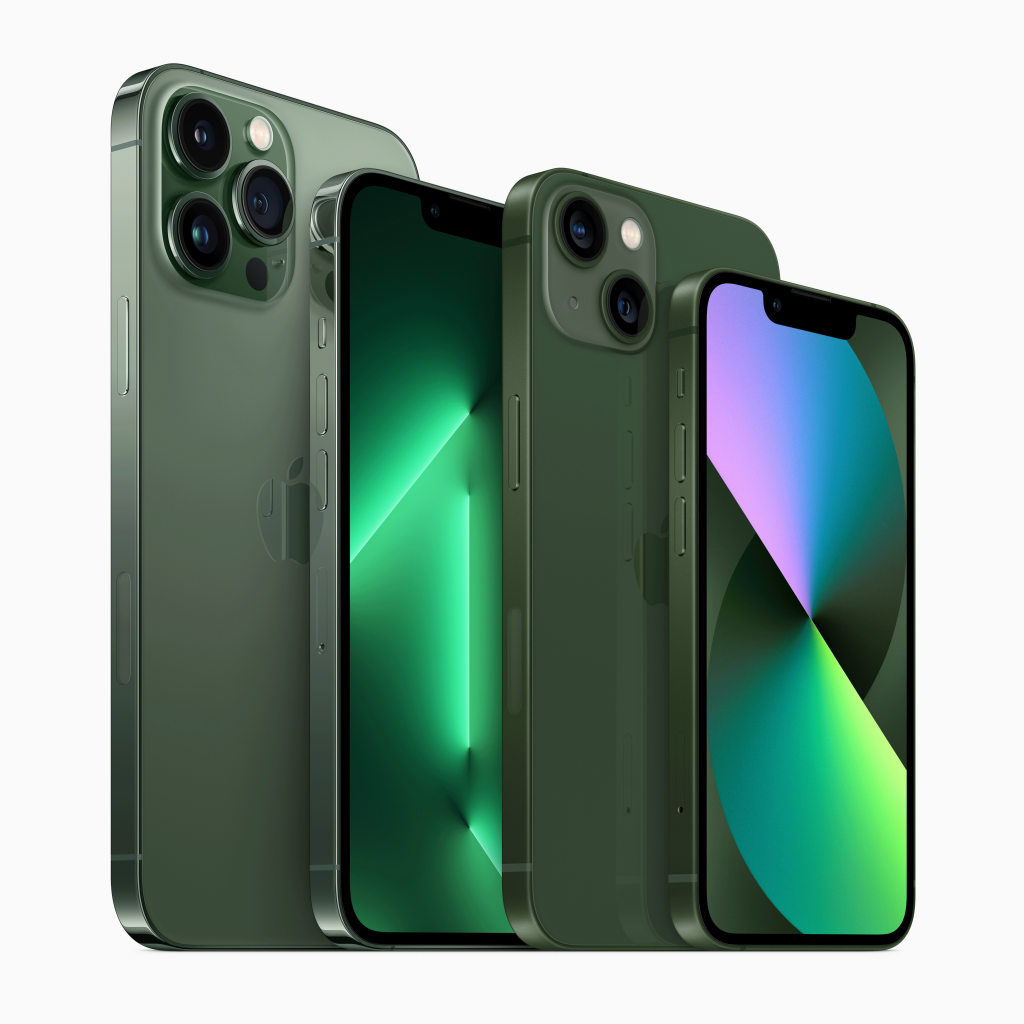
The iPhone 13 came out along with the iPhone 13 mini, the iPhone 13 Pro, and the iPhone 13 Pro Max. The design was pretty much the same, but there were some new colour options. On the inside, it was a bit smaller and had a lot of big changes to date. This model probably had the thing we liked most about it: a better camera, a new processor, and a better battery.
Price Guide:
The iPhone 13 Mini costs from $1,199 (no longer available).
From USD 1,099, the iPhone 13
Price: USD 1,699 for the iPhone 13 Pro
Price: USD 1,849 for the iPhone 13 Pro Max
Release date: September 24, 2021
Price: from USD 1,199 when it comes out
The iPhone 14
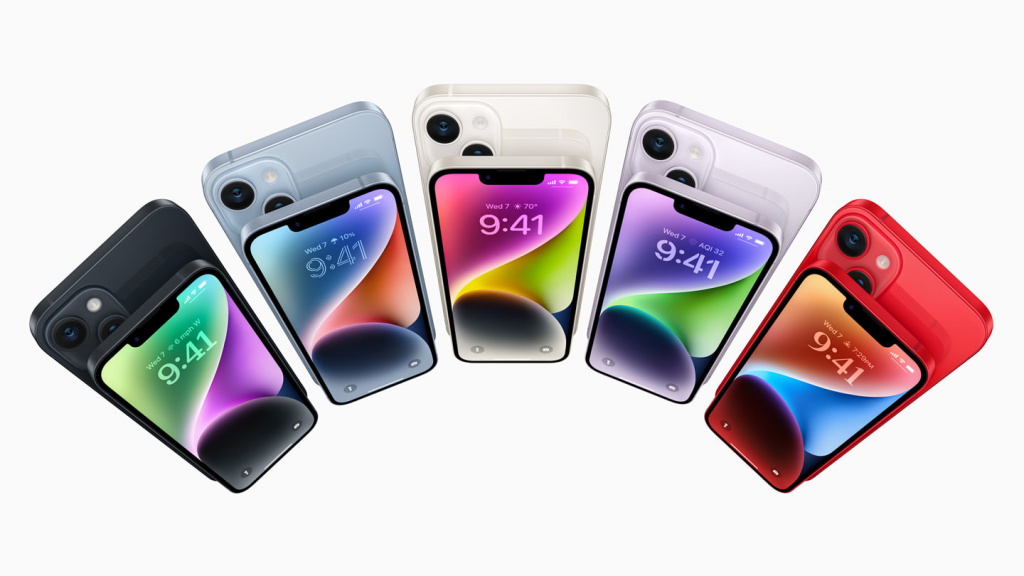
On Friday, September 16, 2022, Apple released the iPhone 14. It had a new chipset, camera, and “dynamic island” in the Pro iPhone models to replace the notch. To everyone’s surprise, the price of the iPhone 14 didn’t change from the same iPhone models in the iPhone 13.
Now that the new iPhone 15 is out, prices have gone down on all of the iPhone 14 models. You can now buy the iPhone 14 and iPhone Plus through the links below. Interestingly, Apple has stopped selling the iPhone 14 Pro and iPhone 14 Pro Max, so you can’t get them from their website.
iPhone 14 price guide:
From USD 1,299, the iPhone 14
From USD 1,499, the iPhone 14 Plus
Price: USD 1,749 for the iPhone 14 Pro
Price: USD 1,899 for the iPhone 14 Pro Max
When the new iPhone 14 lineup came out, the Mini was unfortunately taken away.
Release date: 16 September, 2022
Prices start at USD 1,399
The iPhone 15

When the iPhone 15 and 15 Pro came out on September 22, 2023, they were the first Apple phones to have USB-C ports. Prices also went up by USD 100 across the board.
Apple took the improvements over the iPhone 14 to a whole new level by giving the Pro iPhone models a Titanium body and a new action button. The new A17 Pro chip was put in the Pro and Pro Max, but the A16 Bionic chip from the iPhone 14 was kept in the regular iPhone models. Peak brightness outside was raised to 2000 nits, which is twice as bright as the previous generation. New “Voice Isolation” technology made phone calls sound better on both the Pro and standard iPhone models.
Both model grades now have cameras with 48MP sensors instead of 24MP sensors by default. Night Mode and Smart HDR have also been improved. The Pro models also have Log encoding for professional video and the ability to connect an external hard drive while shooting so that these huge files can be stored. Finally, and most importantly, the Pro Max was the only one to get 5x optical zoom and the ability to record “Spatial Video,” which is a three-dimensional video that will be used with Apple Vision Pro in the future.
iPhone 15 price guide:
Starting at USD 1,499, the Apple iPhone 15 128GB
Starting at USD 1,649, the Apple iPhone 15 Plus 128GB
Starting at USD 1,849, the Apple iPhone 15 Pro 128GB
From USD 2,199, you can get an Apple iPhone 15 Pro Max 256GB
Release date: 22 September, 2023
Prices start at USD 1,499
Some of the best iPhones that Apple no longer sells!
We still think you should get an iPhone 14 Pro or iPhone 14 Pro Max if you can find them on sale for a good price. You might still be able to find the iPhone 13 Pro or iPhone 13 Pro Max. These phones are better than the iPhone 13 and more like the iPhone 14. What if you want a small iPhone and find an iPhone 13 mini that’s on sale? That could be the iPhone model for you.
Additional Considerations
Before purchasing an iPhone, there are a few extra things you might want to think about to make sure the device fits your requirements and tastes. Here are some things to think about:
- Budget: Set a budget and look at the iPhone models that are in that range. Think about not only the initial cost but also possible extra costs like AppleCare and accessories.
- Storage Capacity: Based on how you usually use it, figure out how much storage you need. You might need more space if you take a lot of photos and videos or download a lot of apps.
- Model and Size: Pick the model and size of the iPhone that works best for you. There are different sizes of iPhones, from the small iPhone SE to the big iPhone Pro Max. Think about things like how portable you want it to be and what size screen you want.
- Camera Features: If photography is important to you, look at how the cameras on different iPhone models compare. Most of the time, camera systems on higher-end models are better.
- Battery Life: What kind of battery life does the iPhone you want have? Think about how you normally use it and whether the battery life is enough for the whole day.
- Compatible with iOS: Make sure that the iPhone you’re thinking about can handle the newest iOS updates. Apple regularly sends out updates that include security patches, new features, and improvements.
- Connectivity: Make sure that the iPhone can connect to the networks you need it to, like Wi-Fi, Bluetooth, and cellular networks.
- Accessories and Ecosystem: Think about the available accessories and the Apple ecosystem. There is a way for these devices to work better together if you already have other Apple products like a MacBook, iPad, or Apple Watch.
- Services from Apple: Check out Apple’s services, like iCloud, Apple TV+, and Apple Music. Some services may offer bundles that make them more valuable.
- Future Updates: Think about how long the device will last. Apple usually releases software updates every few years, but updates for newer models happen for a longer time.
- Reviews and User Feedback: To get an idea of how the iPhone model you’re interested in works and what people think about it, read reviews from reliable sources and look at user feedback.
- Value for Money: Most of the time, iPhones can be sold for a good price. Think about how well the model holds its value if you want to upgrade in the future.
Taking the time to think about these things can help you make an informed choice and pick an iPhone that fits your needs and preferences.
Conclusion
Apple iPhone is a popular smartphone that offers eight models with unique features and improvements. The iPhone 6 and 6 Plus are some of Apple’s most popular phones, featuring a 5.5-inch 1080p display, Retina HD display, 128GB of storage, 4.7-inch displays, a 12MP camera, and 2GB of memory. The iPhone SE, iPhone X, iPhone 11 Pro, and 11 Pro Max are smaller, more compact models with similar features. The iPhone 13 was the first iPhone model to connect to 5G networks, and the iPhone 13 Mini, iPhone 13 Pro, and iPhone 13 Pro Max have all made significant changes.
The iPhone 14 and 15 models have seen significant improvements in chipset, camera, and “dynamic island” features. The Pro and Pro Max models have a 9% lighter weight, Log encoding for professional video, and Wi-Fi 6E for faster connections. The iPhone 15 Pro Max offers a 5x optical zoom and the ability to record “Spatial Video,” which will be used with Apple Vision Pro in the future. To make an informed choice on which iPhone to buy, consider factors such as budget, storage capacity, model and size, camera features, battery life, compatibility with iOS, connectivity, accessories, and the Apple ecosystem.
FAQs
What iPhone model should I buy?
Think about your performance needs, budget, and the features you want. Read reviews, look into the newest iPhone models, and compare their specs to find the one that meets your needs the best.
How much storage do I need?
It depends on how much storage you need. You might need more storage space if you take a lot of photos and videos or download a lot of apps. For a good experience, think about getting at least 128GB.
Is it better to buy the latest model or an older one?
You should think about your needs and budget. The newest iPhone models usually have the most up-to-date features and improvements, but older iPhone models can still be good choices, especially if you want to save money.
Should I buy from Apple or a carrier?
When you buy directly from Apple, your phone is unlocked, so you can use it with any carrier. Carriers may offer discounts and ways to pay for your trip, but make sure you read the fine print to avoid any legal issues.
What about refurbished or second-hand iPhone models?
Apple’s refurbished iPhone models can be a good deal because they are tested carefully and come with a warranty. When you buy used, make sure the device is in good shape, find out when it was bought, and make sure it works with your carrier.
Do I need AppleCare+?
AppleCare+ gives you more support and a warranty that lasts longer. It depends on how much risk you are willing to take and your budget. Think about things like how often you use it and how much repairs might cost.
When do new iPhone models come out?
New iPhone models come out once a year, usually in September. You might be better off getting the newest model if you can wait. If not, buying an older model when a new one comes out might cause the price to drop.
What accessories do I already have that will work with my new iPhone?
This is based on the model and any changes made to the ports or design. Some newer iPhone models may use USB-C instead of Lightning, so make sure your accessories will work with them before you buy them.
Is it worth waiting for a sale or promotion?
Apple doesn’t usually offer big discounts, but carriers and stores may have sales or trade-in deals. If you want to save money, you might want to wait for sales like Black Friday or back-to-school deals.
How long will my iPhone receive software updates?
Apple usually keeps iPhones up to date with iOS updates for five to six years. This keeps your device safe and makes sure it works with the newest apps and features.
You may also like: Ultimate Guide to Customizing Your iPhone Home Screen
